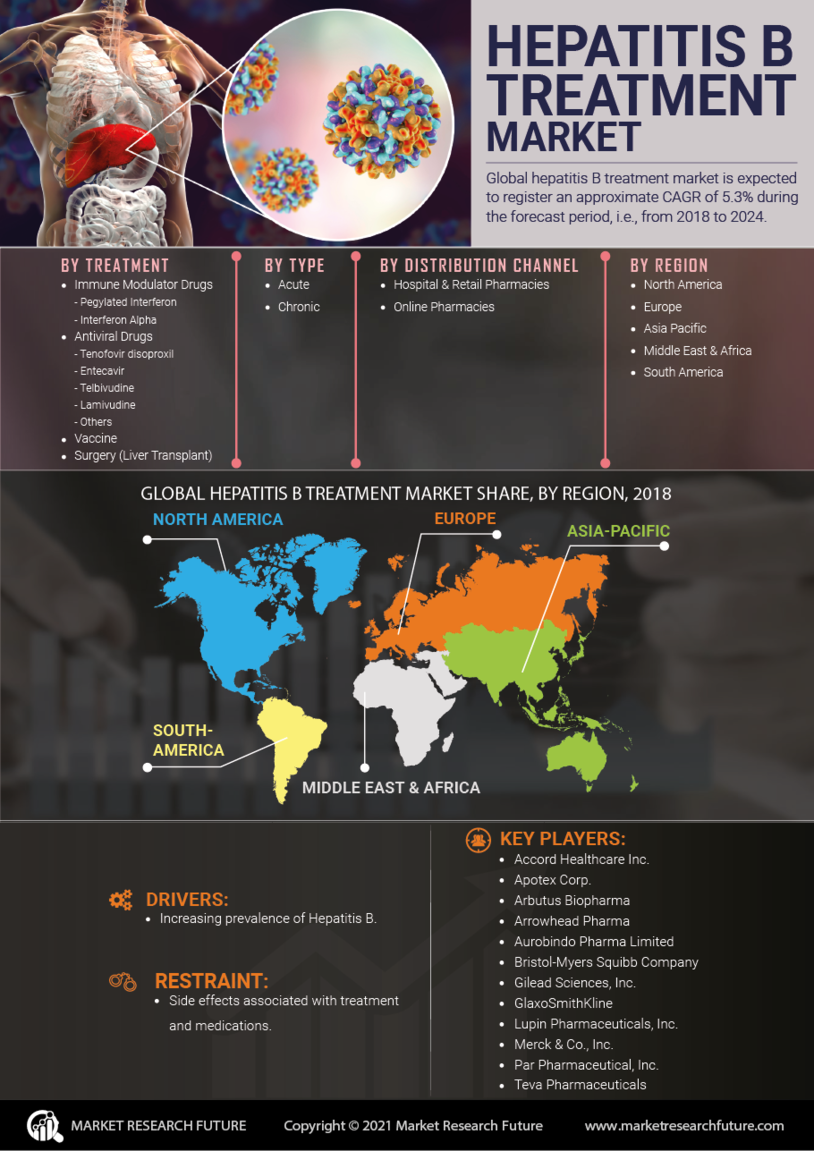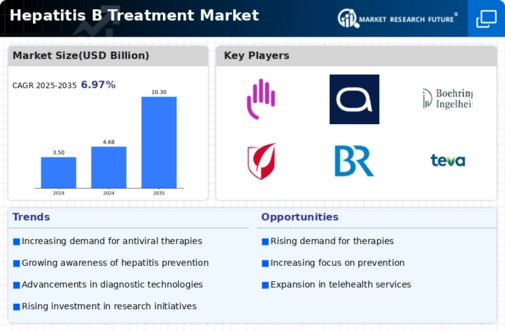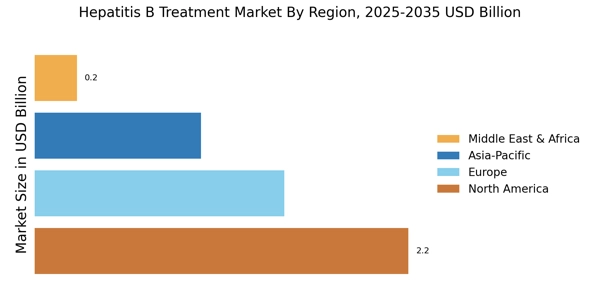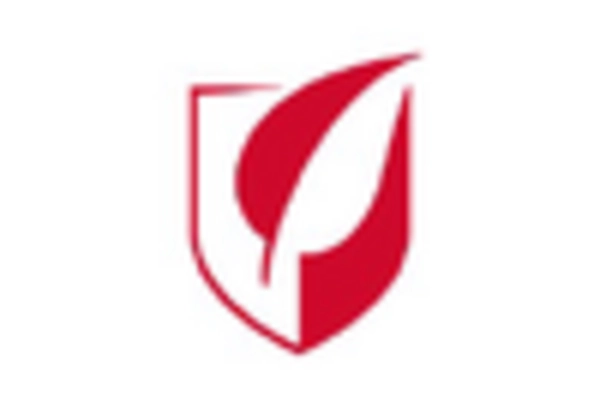Growing Awareness and Education
Growing awareness and education regarding Hepatitis B are pivotal drivers of the Hepatitis B Treatment Market. Public health campaigns aimed at educating communities about the risks and consequences of Hepatitis B are gaining momentum. Increased awareness leads to higher rates of testing and diagnosis, which in turn drives demand for treatment options. Healthcare professionals are also receiving enhanced training on Hepatitis B management, further promoting early intervention. As more individuals become informed about the disease, the likelihood of seeking treatment increases, thereby propelling the Hepatitis B Treatment Market forward. This trend suggests a positive correlation between education efforts and market growth.
Rising Prevalence of Hepatitis B
The increasing prevalence of Hepatitis B is a primary driver for the Hepatitis B Treatment Market. According to estimates, approximately 257 million individuals are living with chronic Hepatitis B worldwide. This alarming statistic underscores the urgent need for effective treatment options. As awareness of the disease grows, healthcare systems are compelled to enhance their treatment protocols, thereby expanding the market. The rising incidence of Hepatitis B infections, particularly in regions with limited access to healthcare, further propels the demand for innovative therapies. Consequently, pharmaceutical companies are investing in research and development to address this pressing health issue, which is likely to stimulate growth in the Hepatitis B Treatment Market.
Government Initiatives and Funding
Government initiatives and funding play a crucial role in shaping the Hepatitis B Treatment Market. Many countries are implementing national strategies aimed at eliminating Hepatitis B, which includes increasing access to screening and treatment services. For instance, funding for public health campaigns and subsidized medications is becoming more prevalent, thereby facilitating broader access to essential therapies. These initiatives not only raise awareness but also encourage healthcare providers to prioritize Hepatitis B management. As a result, the market is likely to experience growth as more patients receive timely treatment, contributing to improved health outcomes and reduced transmission rates.
Emergence of Telemedicine Solutions
The emergence of telemedicine solutions is reshaping the Hepatitis B Treatment Market. With the rise of digital health technologies, patients are increasingly able to access healthcare services remotely. Telemedicine facilitates consultations, follow-ups, and monitoring of treatment adherence, which is particularly beneficial for individuals in underserved areas. This shift towards virtual healthcare is likely to enhance patient engagement and streamline treatment processes. As telehealth platforms continue to evolve, they may provide integrated solutions for Hepatitis B management, thereby expanding the reach of treatment options. Consequently, the Hepatitis B Treatment Market is expected to benefit from this technological advancement, as it aligns with the growing demand for accessible healthcare.
Advancements in Treatment Modalities
Recent advancements in treatment modalities are significantly influencing the Hepatitis B Treatment Market. The introduction of novel antiviral therapies, such as tenofovir and entecavir, has transformed the management of Hepatitis B, offering improved efficacy and safety profiles. These advancements have led to a notable increase in treatment adherence among patients, as they experience fewer side effects. Furthermore, the development of long-acting injectable formulations is anticipated to enhance patient compliance, thereby expanding the treatment landscape. As healthcare providers increasingly adopt these innovative therapies, the Hepatitis B Treatment Market is poised for substantial growth, driven by the demand for more effective and patient-friendly treatment options.


















Leave a Comment